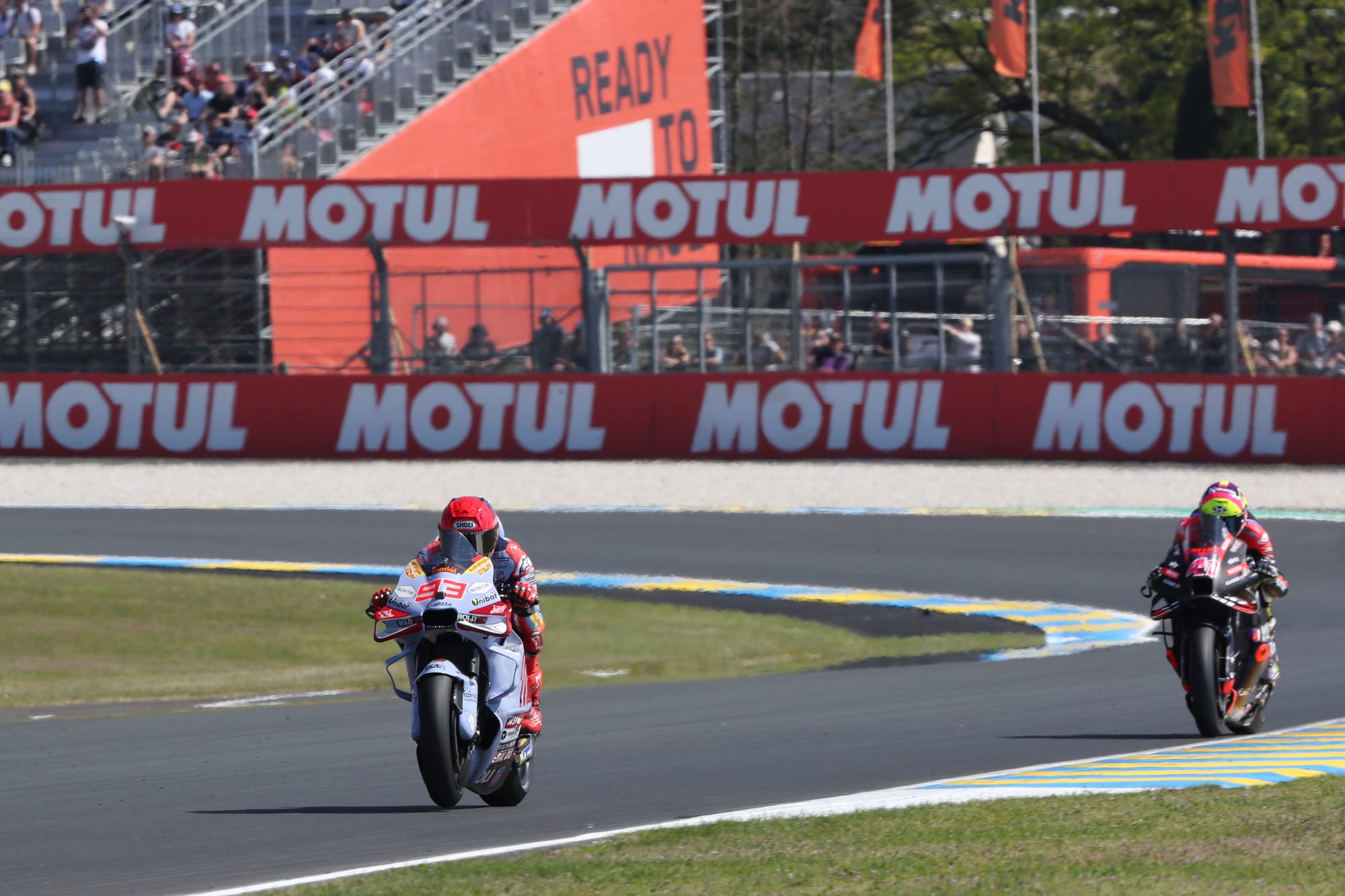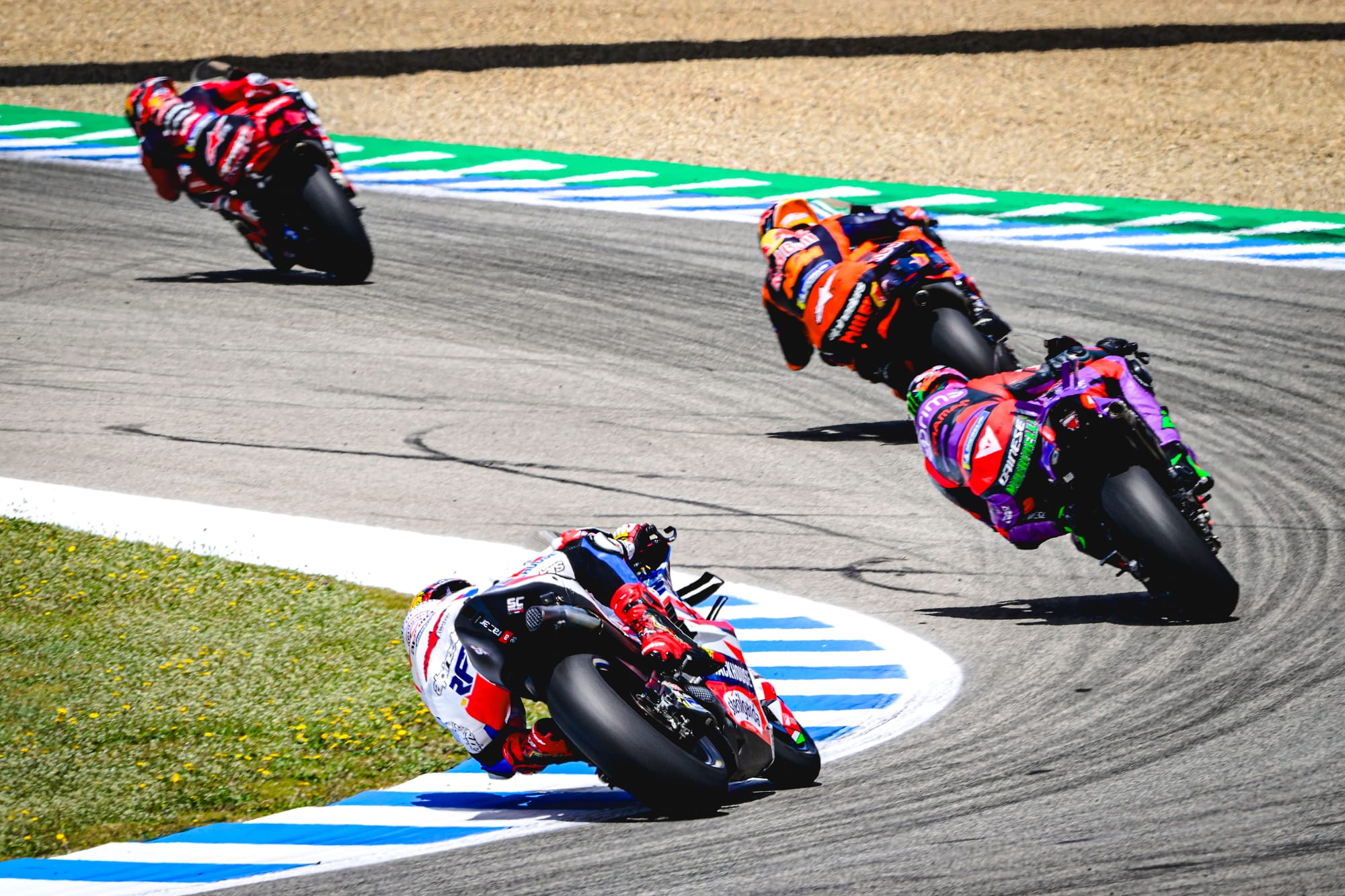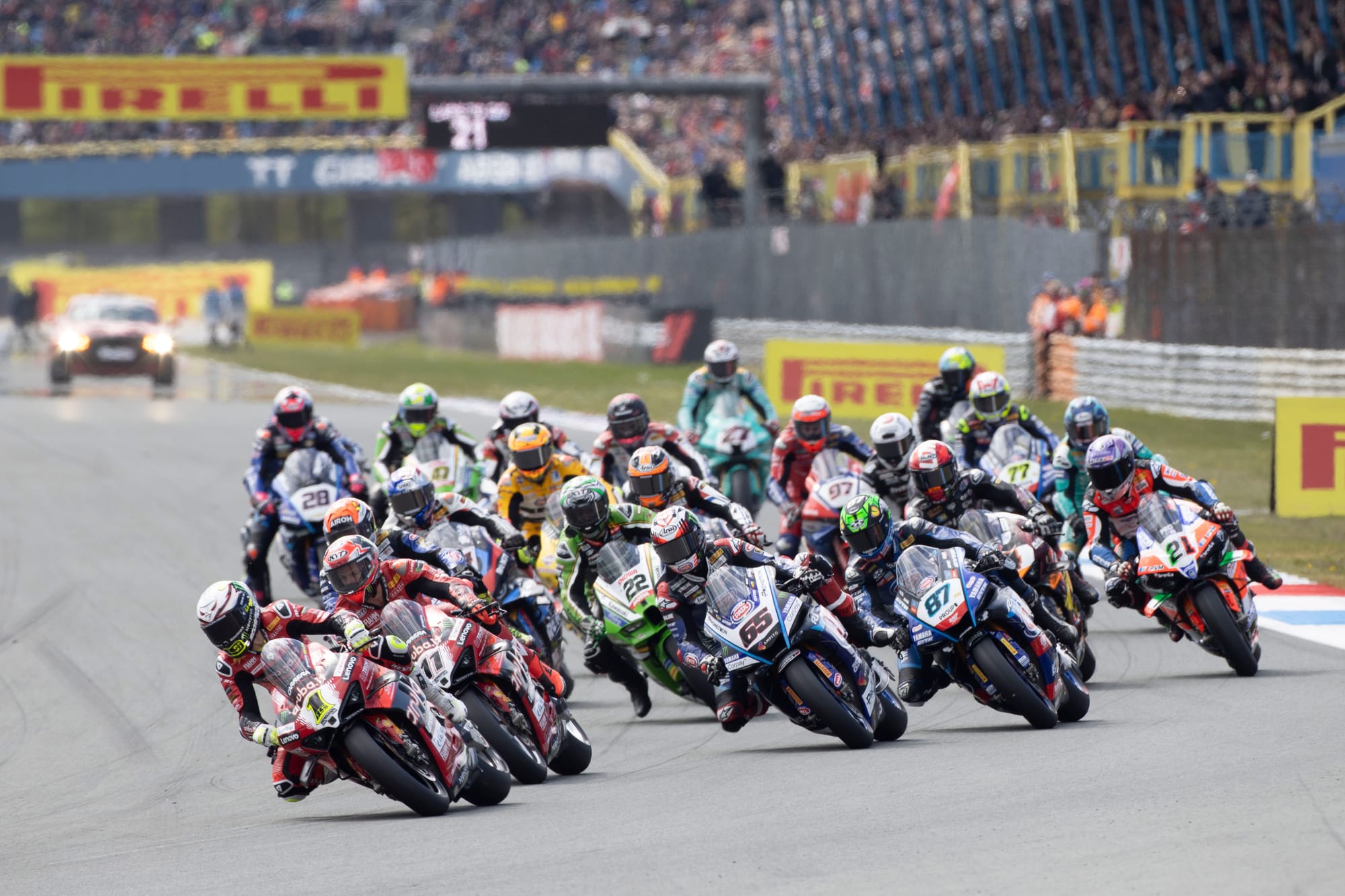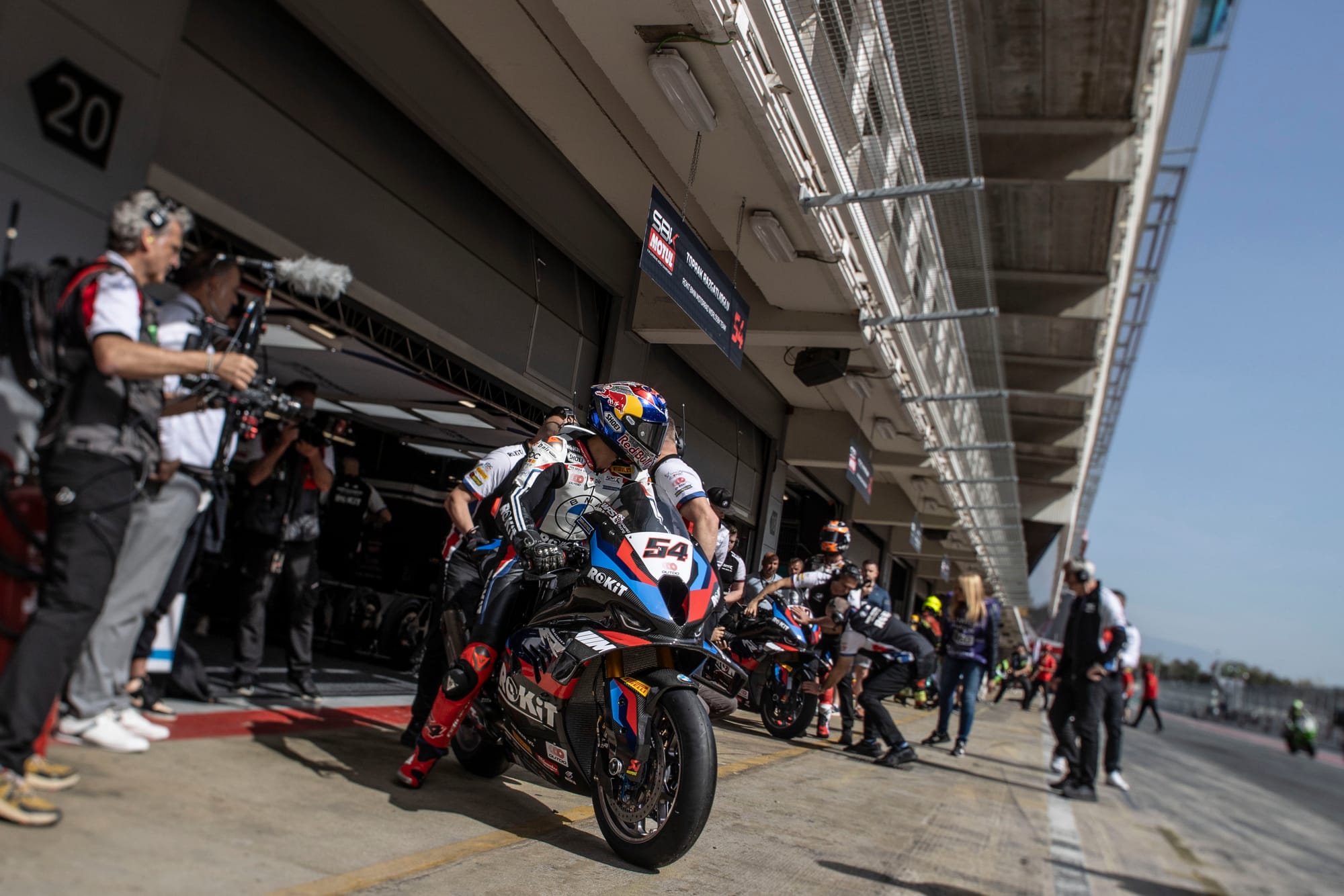until Abu Dhabi Autonomous Racing League

With MotoGP’s long-awaited 2027 rulebook announced only a few days before the French Grand Prix weekend, the new regulations were always going to be a key topic of conversation at Le Mans as key figures took the opportunity to speak to the media and explain some of the more complicated details of the series’ most radical revamp in 15 years.
Series promoter Dorna’s CEO Carmelo Ezpeleta, FIM president Jorge Viegras, International Race Team Association president Herve Poncheral and series sporting director Carlos Ezpeleta all took the opportunity to answer questions on Friday in an exceptional press conference that clarified some of the details announced earlier in the week.
Here are the main takeaways:
Top speed reductions - not slower laptimes

Perhaps the headline news to take away from the regulations is about what their primary purpose is. That - it seems - is to slow down the bikes in the most direct of ways, by cutting their top speeds while potentially not seeing all that much of a change in laptimes compared to what some were expecting.
That makes sense, because while the main focus of the regulations is to make the racing safer, that can all be achieved by making sure bikes arrive at the point of most jeopardy - corner entry - a little bit slower.
Those corner entries have become increasingly fraught since the explosion of aerodynamics and ride height devices, so reducing the impact of one of those and banning the other - in addition to limiting power - should mean that more margin for error is possible without radical change.
“For what the manufacturers are telling us, we can expect differences from around one to two seconds depending on the circuit,” said Carlos Ezpeleta.
“That’s what they’re telling us. Of course, performance and safety are always inversely proportional to a certain extent, and we are expecting a performance drop, but a bigger one in top speeds at a number of circuits.”
Is a development freeze coming?

A somewhat novel idea that’s not actually covered by the new rules but that has nonetheless been discussed since they were announced is the possibility that the current technical regulations will essentially be frozen for the final year of the current rules in 2026.
That would be in order to give manufacturers a chance to both save money and to spend time concentrating on the new 850cc engines.
Last done during the COVID pandemic when engineers were severely restricted in their travel, it’s a sensible idea. And despite needing unanimous consent from the current five factories, it’s something that Carlos Ezpeleta said is being considered for at least some of the teams based on MotoGP’s current concession system.
“It’s a subject that’s being discussed,” he admitted. “The only limitation currently to development is the engine, and that’s a point to be discussed.
“It’ll always depend if you’re on concessions or not, but it’s something we’re discussing with the manufacturers. There’s no end result as of today.”
New World Superbike rules coming soon

One question that’s been asked repeatedly since the new rules were revealed is what those changes will mean for production racing, should it end up being faster than the premier class when the capacity and power is cut in 2027.
But with many of the safety issues around increasing speed and decreasing runoff areas that apply to MotoGP and that are driving the new rules also applicable to World Superbike, the FIM’s next priority seems to be a long-called for move towards a new rulebook for that championship.
“Obviously we want to have MotoGP at the top,” FIM president Viergas stressed. “Superbikes were meant to be stock bikes with some changes, and we have also started working to change the resolutions there.
“Something will happen very soon, but in a way that will keep a distance between MotoGP and Superbikes. We’re talking to all the manufacturers, but great work is being done on a consensual solution.”
BMW entry looks increasingly likely

It’s something of an open secret now in the MotoGP paddock that there’s intense interest from BMW in ending years of ‘will it, won’t it’ speculation and finally signing up to race in the premier class.
And while it might not have been outright named by the panel during the press conference, it’s sounding very much like the new rules will also roll out the red carpet to BMW.
“Everyone has been waiting for the new technical rules to decide the future,” explained Carmelo Ezpeleta. “We’re extremely happy with the five manufacturers we have now in MotoGP, and it’s an incredible collaboration.
“But obviously yes, there have been different manufacturers who have shown their interest to be a part of the championship in the future, obviously confidentially between us and them.
“After today’s presentation of the rules, we were expecting this development, but with the success of MotoGP until now and everyone expecting the new rules, it’s giving much interest to the new manufacturers.”
